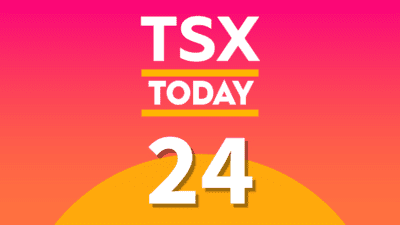Inflation is an invisible tax on everyone. The government has promised to mitigate the issue by expanding social programs such as the Canada Pension Plan (CPP) and Old Age Security (OAS). Unfortunately, these expanded programs won’t fully offset the impact of record-high inflation.
Here’s a closer look at why social programs are lagging behind this inflationary wave and what investors can do to protect themselves.
Lagging inflation
Most social programs have some commitment to index payments to the cost of living. In other words, they should keep up with inflation. However, the way indexation is calculated leads to smaller increases in payments from these programs.
In 2023, the Canada Pension Plan (CPP) and Old Age Security (OAS) payments are due to be expanded. Based on the Public Service Superannuation Act (PSSA) and the Supplementary Retirement Benefits Act (SRBA), the payments should be indexed to inflation every year. However, the indexation is calculated by taking the average monthly inflation of the two previous years. That means the indexation rate for 2023 is 6.3%.
Meanwhile, the inflation rate is 6.9% as of October 2022. In June, the rate peaked at 8.1%. Put simply, pension plans are lagging behind inflation. This squeezes pensioners in a subtle way.
Better alternatives
Inflation is shrinking the government safety net for elderly pensioners. However, young investors have more breathing room to secure their retirement independently. That’s because the TFSA contribution room is expanding to $6,500 in 2023. That’s 8.3% higher than last year. And 0.2% higher than peak inflation.
Meanwhile, the stock market has been sliding lower and fixed interest rates have been rising. A typical Guaranteed Investment Certificate (GIC) offers 5.25% right now. Yet, some high-quality blue chip stocks like Enbridge (TSX:ENB)(NYSE:ENB) offer dividend yields as high as 6.2%.
The ongoing energy crisis is a major tailwind for Enbridge. I believe the company could see further upside in revenue for several years as North America tries to plug the energy shortage in Europe. That means higher net income and better dividends for shareholders.
The cost of energy is tightly linked to annual inflation. This is why I consider Enbridge a robust hedge against this inflationary wave. Investors looking to preserve wealth and passive income should take a closer look at inflation-resistant stocks like ENB in 2023.
Bottom line
The government has expanded the safety net. CPP and OAS payments are rising next year. Unfortunately, the hikes are below the actual inflation experienced by pensioners and retirees.
Younger investors can avoid this squeeze by investing in alternatives. Investing your expanded TFSA in a dividend growth stock could be a better way to fight inflation and secure your financial future. You could bolster your financial security with a steady flow of passive income from the energy or telecommunications sector.








